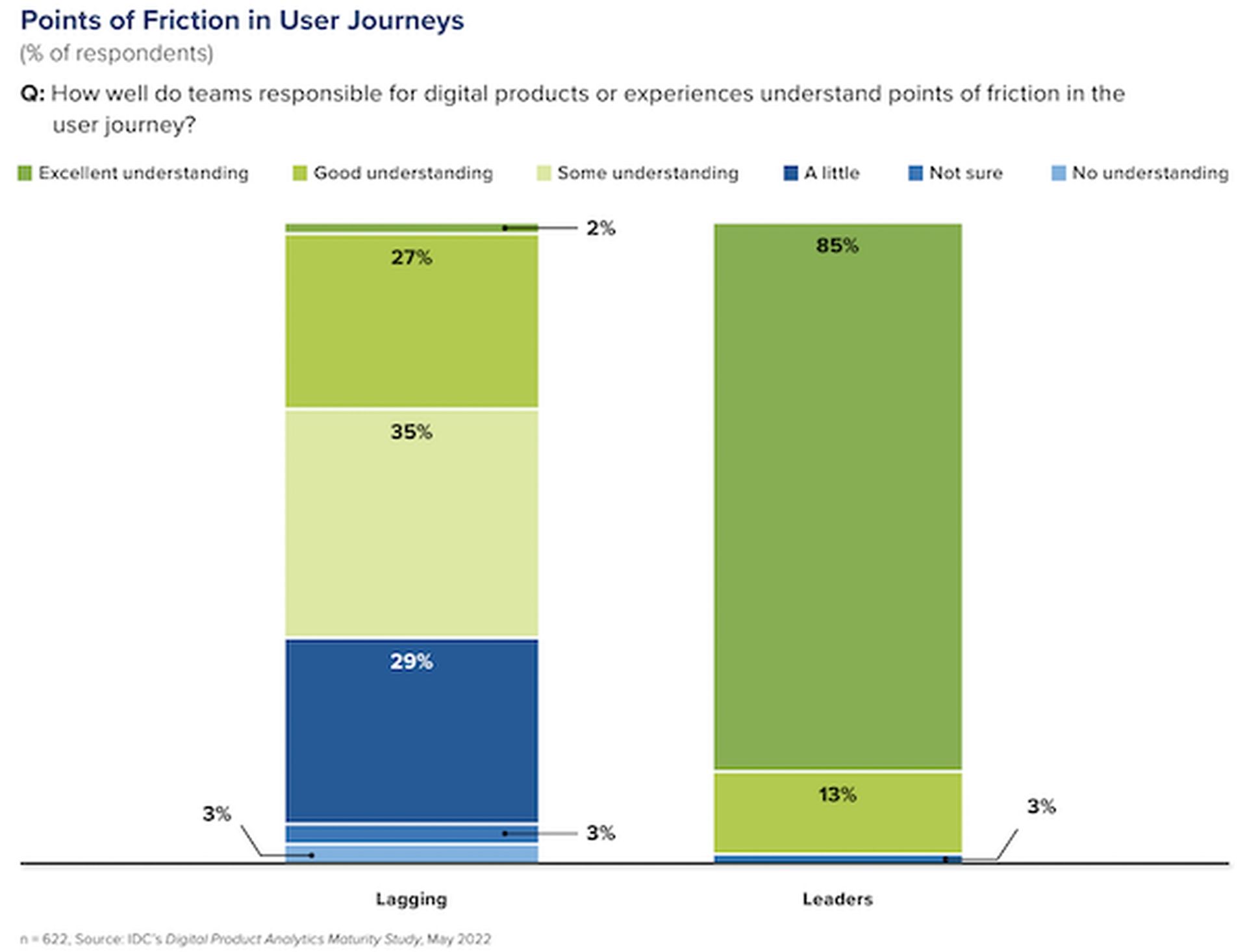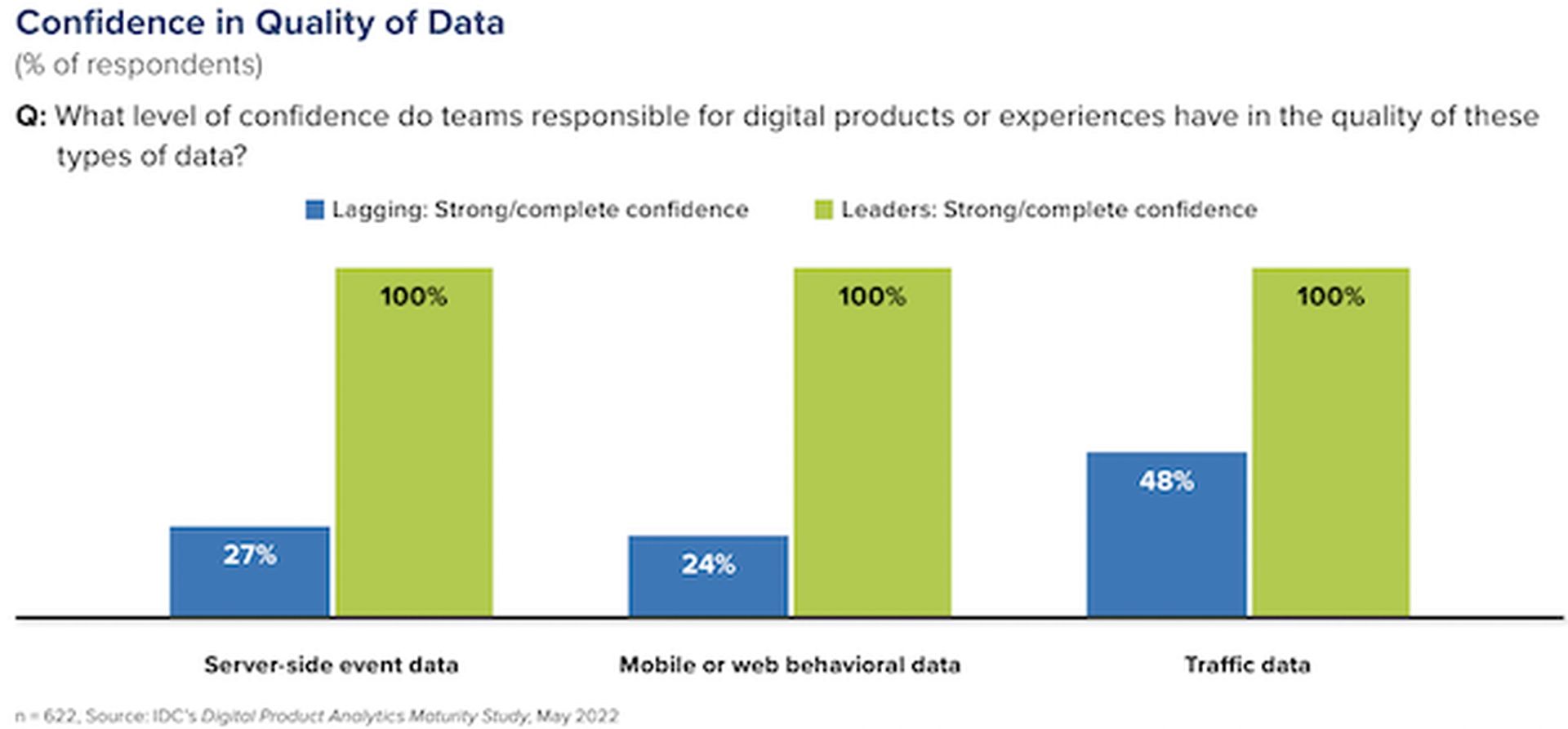- IDC defines data maturity as the degree to which an organization successfully uses data and incorporates it into decision-making.
- The IDC white paper investigates the relationship between an organization’s data maturity and its financial performance.
- In contrast to organizations with lower degrees of data maturity, those with the greatest levels reported 3.2 times as much revenue and 2.4 times as much profit.
- The study found that data maturity may increase every corporate result by up to 2.5 times, including net promoter scores, profits, operational efficiency, and customer loyalty and value.
Heap, a provider of digital insights, has released findings from its recently published sponsored IDC white paper, “How Data Maturity and Product Analytics Improve Digital Experiences and Business Outcomes.” The paper discovered that businesses with the highest levels of data maturity saw 3.2 times as much revenue and 2.4 times as much profit as businesses with lower levels of data maturity.
What is data maturity?
How effectively a business uses data and incorporates it into decision-making is defined by IDC as data maturity. Many firms are evaluating their data maturity to compare their data capabilities and advancement to their competitors and meet objectives like increased operational effectiveness and consumer loyalty.
Data maturity evaluations can be used to develop best practices for data and spot process gaps that prevent the achievement of these objectives. Additionally, product analytics technology can assist businesses in making better use of their data and advancing data maturity.

Heap-sponsored IDC white paper examines how people, procedures, and technologies affect an organization’s data maturity and business results. It is based on a survey of 626 product builders and data scientists.
According to the study, data maturity can lead to up to a 2.5x improvement in all company outcomes, including greater net promoter scores, earnings, operational efficiency, and higher customer loyalty and value.
Benefits of data maturity
Heap describes the following as the report’s main conclusions:
- Only 29% of the least mature organizations reported having a strong to excellent understanding of customer journey friction points, compared to 98.4% of the most mature firms.
- Compared to only 3% of less data-mature enterprises, over 84% of teams at mature organizations receive answers in minutes or hours.
- Compared to those who are lagging, leaders are more than twice as likely to say that using data for customization was either “easy” or “somewhat easy.”
- Only 3% of the least mature businesses have a single source of truth for data compared to 76% of top teams.
- Over 89% of top teams concur that their firm appreciates learning via experimentation, while 77% of lagging businesses feel the opposite.
- More than 80% of top-performing teams have completely automated data validation, well-defined access control procedures, and the capacity to manage data.

Heap’s CEO Ken Fine said, “In today’s challenging market, efficient growth drivers are more important than ever. [The]‘How Data Maturity and Product Analytics Improve Digital Experiences, and Business Outcomes’ white paper indicates that data-driven insight is a catalyst for business progress leading to profit and revenue increases, shorter time to market, better NPS scores, and improved operational efficiency.”
The article identifies areas for development while highlighting data maturity’s potential benefits. Data access is one problem, and while leading companies claimed to have “strong” or “complete” access to data, just slightly more than half of the businesses in the early part of their data maturity journeys said the same.
Business processes need data management for their continuous improvement
Another noteworthy point is the underutilization of data, with 73% of businesses saying they believe they might use their data more effectively. Data is only used by 70% of participants to gauge the success or failure of key efforts, and 69% said that the highest-paid individual makes decisions with little to no respect for data.

According to the study, less developed firms are paradoxically more content with the data they have access to, and 70% of companies that are falling behind think they are on the level with or even ahead of their rivals regarding data maturity. The organizations falling behind also lack the tools to catch up, with 65% claiming they cannot pinpoint specific user-friction points.
Heap was established to improve user data consumption. The company’s founders, Matin Movassate and Ravi Parikh, created an end-to-end data collecting and analytics system to allow businesses to learn from the user information associated with their web and mobile domains.
Machine learning makes life easier for data scientists
The platform uses an ontological framework to semantically designate which interface elements need to be monitored after automatically gathering data on user interaction. Data is visually represented on the same interface where it is collected for simpler querying.

Users can use multiple analytical methods, such as funnel, retention, and cohort analysis, to apply the labels retroactively on top of their raw datasets to reveal insights they may not have been looking for. Additionally, the software provides an “effort analysis” tool that automatically identifies the interface elements with which users are having the greatest difficulty and explains why.
Heap claims that because data gathering and labeling are separated on its platform, data governance—a driving force in data maturity—is simpler to achieve. The business claims that because data from every event automatically fit into a data structure as soon as it is acquired, these characteristics ensure that data is maintained accurately and orderly.

According to Heap’s sponsored IDC white paper, businesses must invest in digital product analytics technologies to improve their data maturity and business outcomes to compete in today’s digital landscape with demanding customer experience expectations.
Although there are still some data access and governance issues, these solutions can offer the insight and automation required to get the most out of digital projects.
David Wallace, IDC Research Director, Customer Intelligence and Analytics, said, “These findings should be a wakeup call for businesses who want to efficiently grow their business and retain their customers for longer periods of time. As reported, businesses that are most data mature enjoy a 3x increase in revenue versus companies that are the least data mature. Our study illustrates the importance of data maturity and why a data-driven culture is critical to success today, under any market conditions.”





